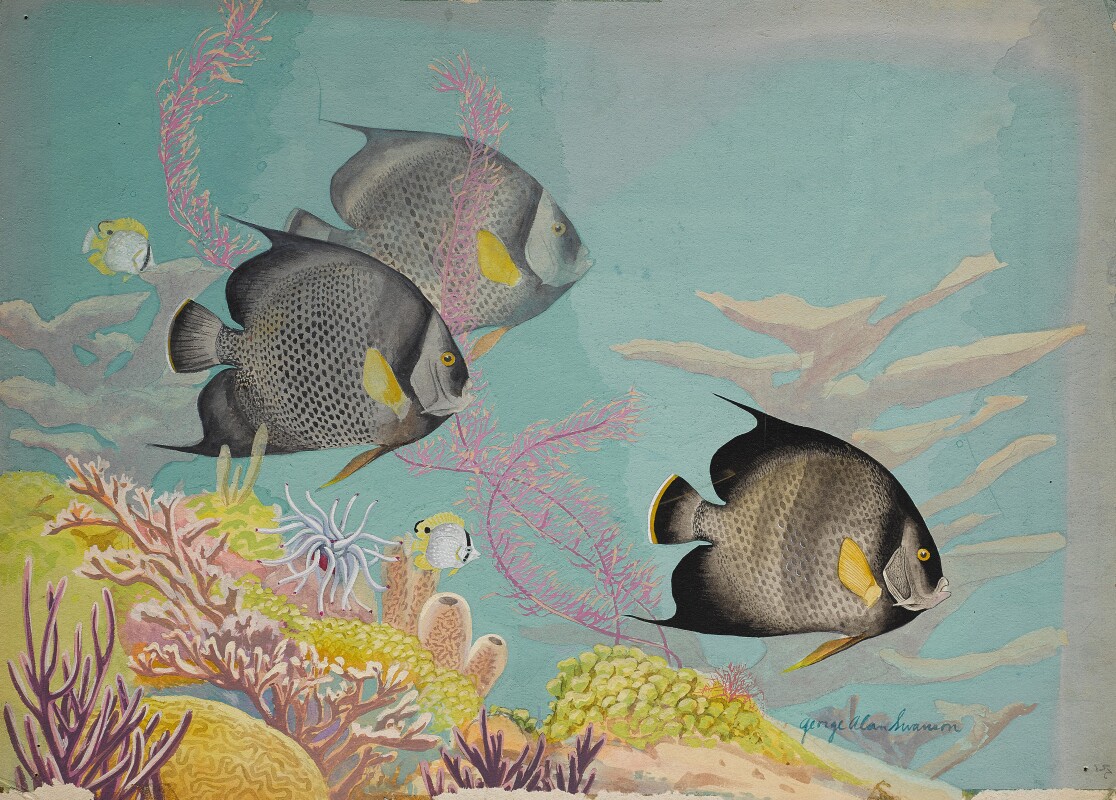A s a child, New York-born artist Alexis Rockman navigated the endless halls of the American Museum of Natural History (AMNH) almost daily. His mother, then an emerging anthropologist, was employed as Margaret Mead’s secretary – a post that allowed a young Rockman to traverse the storied institution at will.

Embarking on expeditions, Rockman had the freedom to unearth the museum’s far-reaching holdings – from standing amid millions of flora and fauna specimens to uncovering the world’s disparate climates by foot. The AMNH additionally introduced a pantheon of figures into Rockman’s life; it was among these treasured objects that Rockman first learned of the American naturalist, William Beebe.
At the AMNH, Rockman happened upon the story of Beebe and the New York Zoological Society scientists, who in 1916, formed a groundbreaking tropical research station in British Guyana, under the auspices of Teddy Roosevelt. As Rockman would read, Beebe and his team were the first scientists to introduce the concept of researching animals in their natural habitats. Prior to Beebe’s team revolutionizing the field, in the early 1900s, naturalists would collect specimens, only to return to their distant laboratories to examine the samples.
And it was in investigating Beebe, that Rockman exhumed the artist George Swanson. The late Swanson, whose career parallels Rockman’s in a myriad of ways, was born in New Jersey in 1904. As Rockman writes, “Swanson’s career brought to life the plants and animals high in the rainforest canopy to the very bottom of the ocean. Executed before color photography, Swanson’s work shows a miraculous and intimate view of nature, the coloration, habits and behavior that was impossible in any other way. His drawings were often the first time the public had an inkling about the marvelous biodiversity of the planet. Swanson used two strategies to describe his subjects: ‘portraits with fragments of their habitat’ or isolated ‘specimens’ on a page.”
A graduate of the Newark School of Fine Art, Swanson initially came across Beebe’s voyages while perusing a newspaper. An ardent adventurer, Swanson was instantaneously determined to unite with Beebe on his expeditions. Thus, in 1932, the artist began to frequent the New York Aquarium to illustrate field studies of sea life. Upon completing his portfolio in 1934, Swanson mailed his work to Beebe in the hope of joining the scientist’s team abroad. Beebe, delighted by the illustrations, hired Swanson to continue his field studies in tandem with his team on Nonsuch Island, and later in Mexico, the Caribbean, and Central and South America.
With impetus from Beebe and Swanson, Rockman left New York in 1994 to illustrate the animals of British Guyana in situ. Rockman explains:
“I caught the catfish the night before this photo was taken and decided to leave it out in the field to see what it attracted. I am drawing the insects that were eating it…it was eventually carried off by a Lesser Yellow Headed Vulture (we had a camera trap that showed it when we had the film developed).”

Today, Rockman is based in New York, and composes paintings that preserve the legacies of both Beebe and Swanson. Rockman’s practice consists of large-scale paintings and field studies that celebrate and commemorate the natural world (both past, present and future); the aforementioned canvases have been exhibited extensively worldwide, including a major retrospective at the Smithsonian American Art Museum in 2010, entitled Alexis Rockman: A Fable for Tomorrow. Recently, Rockman has forayed into motion pictures, serving as an Inspirational Artist for the feature film, The Life of Pi (2012) – working primarily on tiger vision art, as well as a feature at Amazon Studios on the environmental movement in America.






